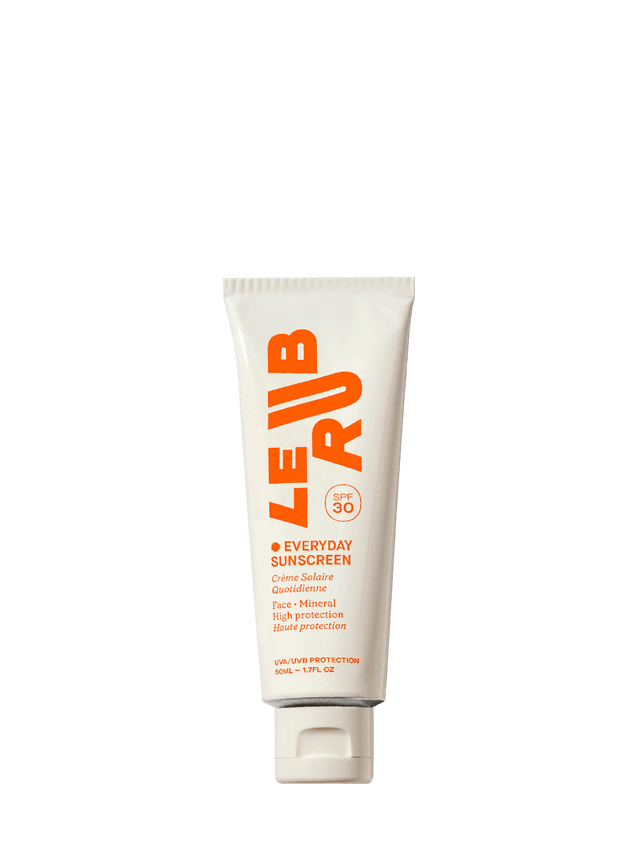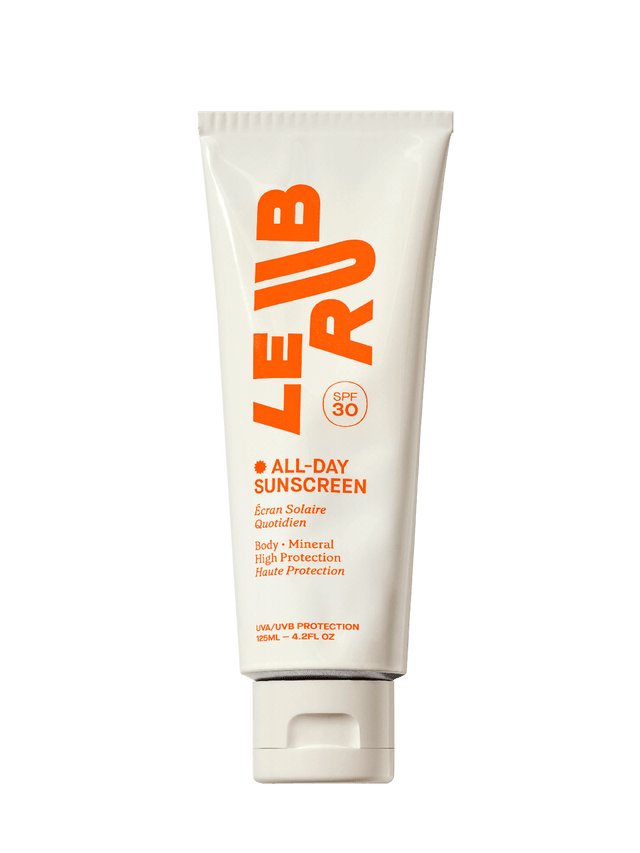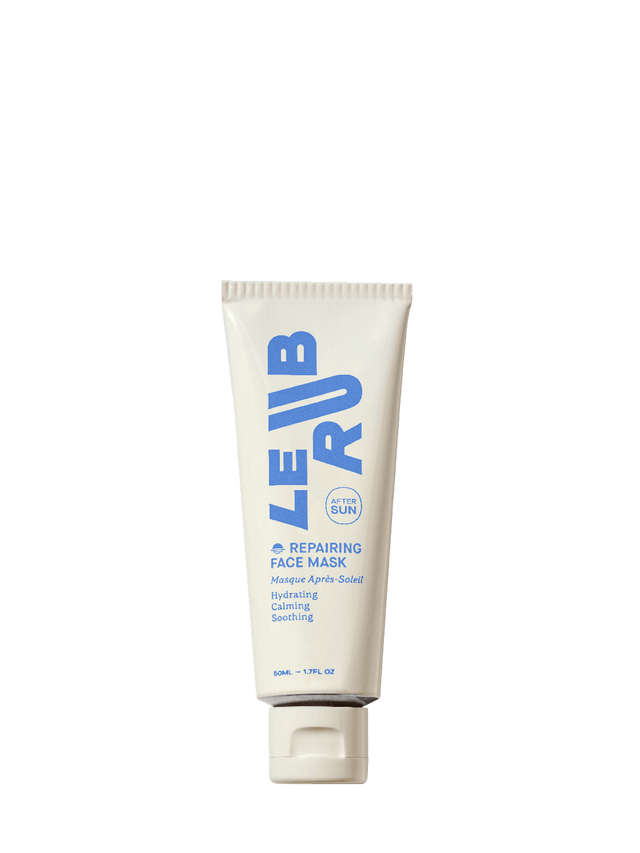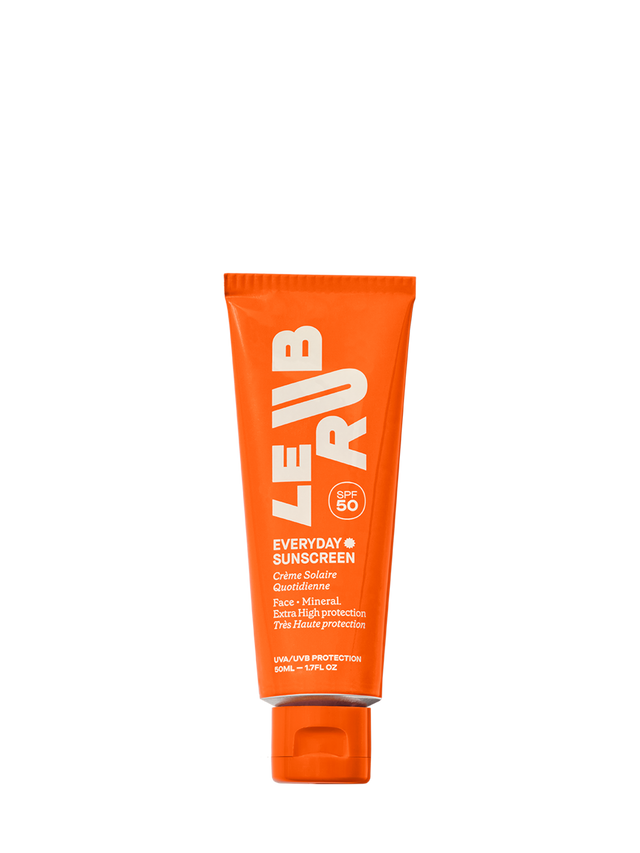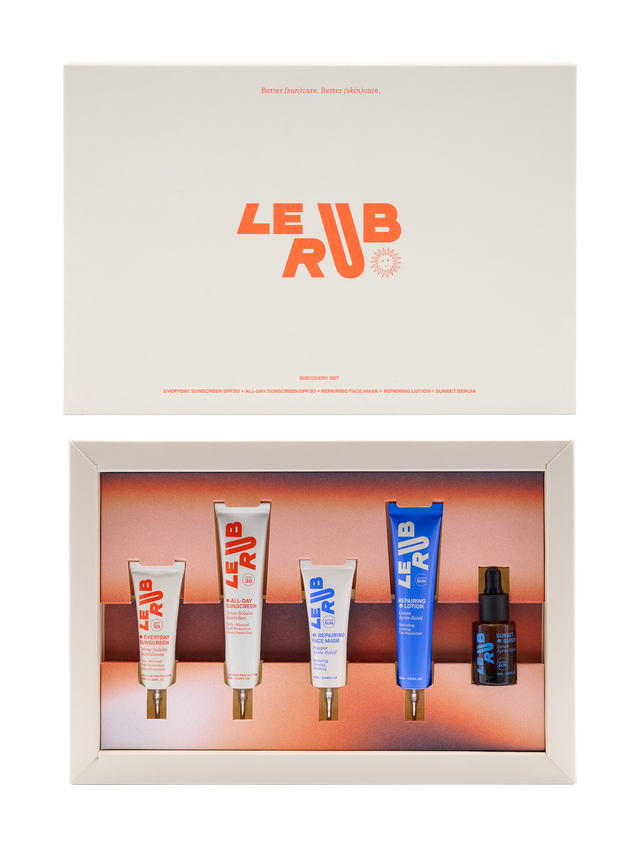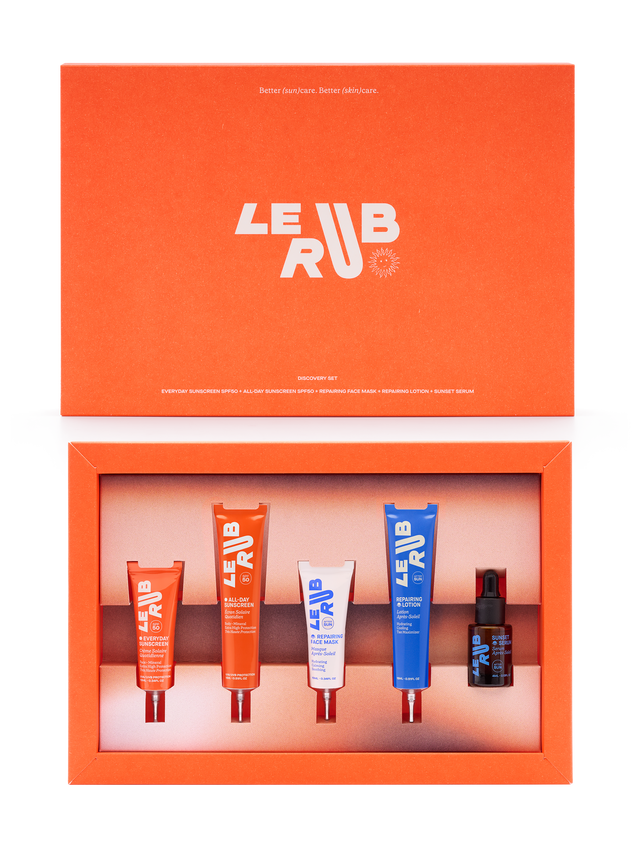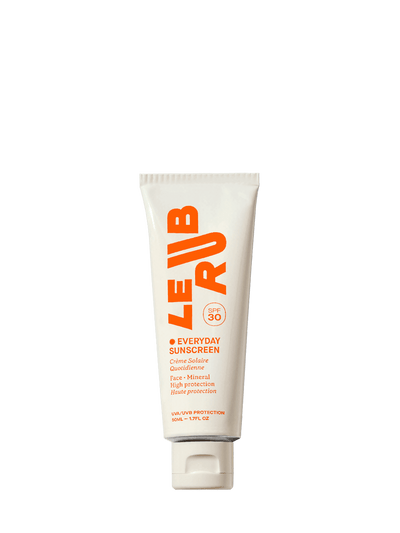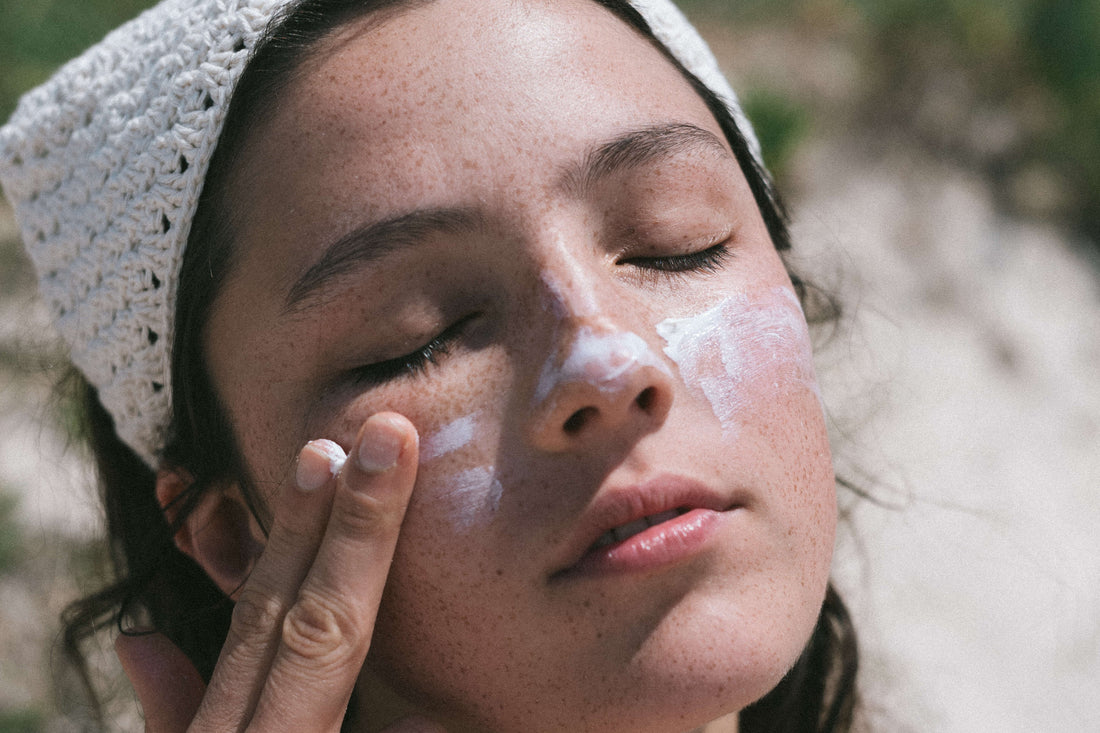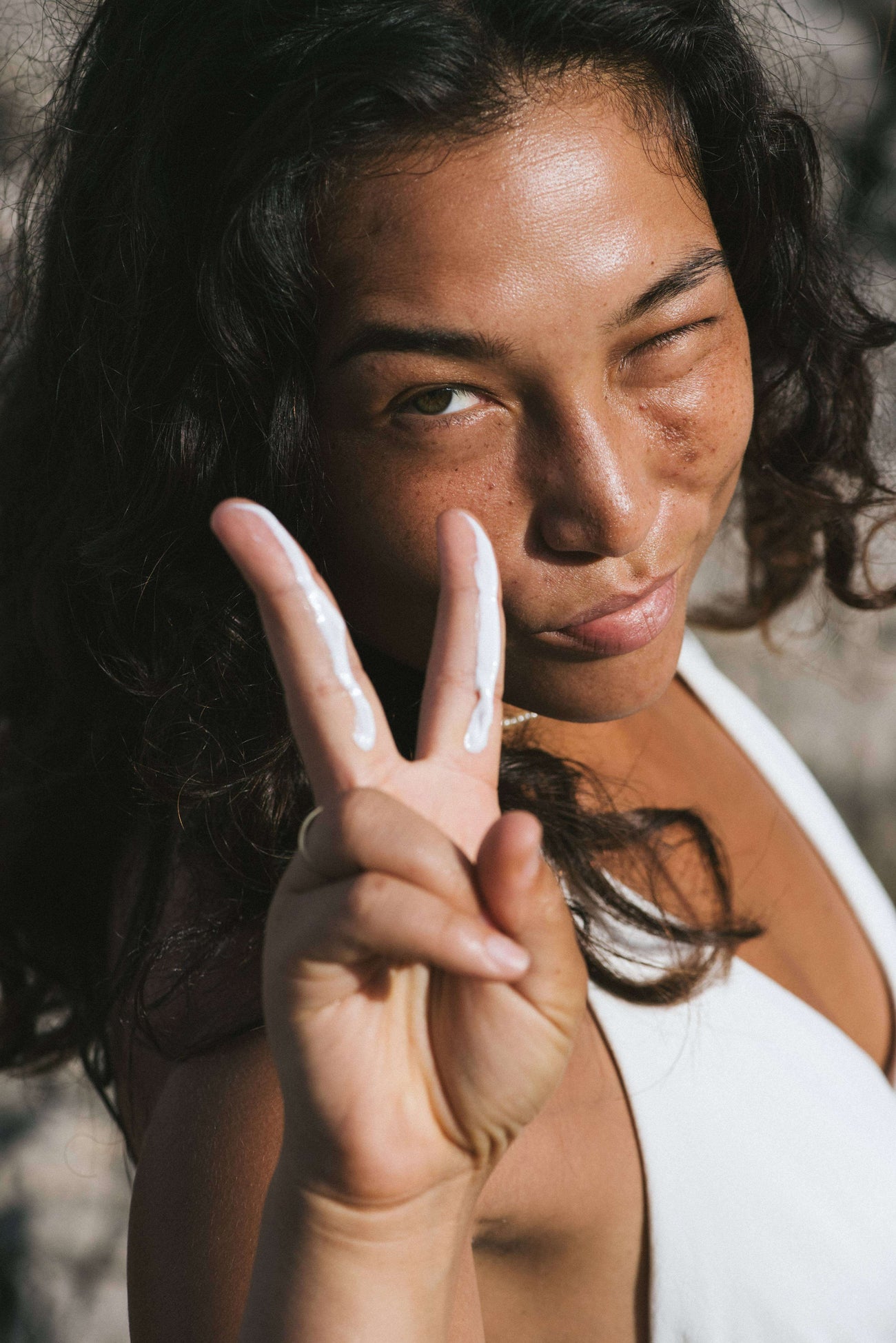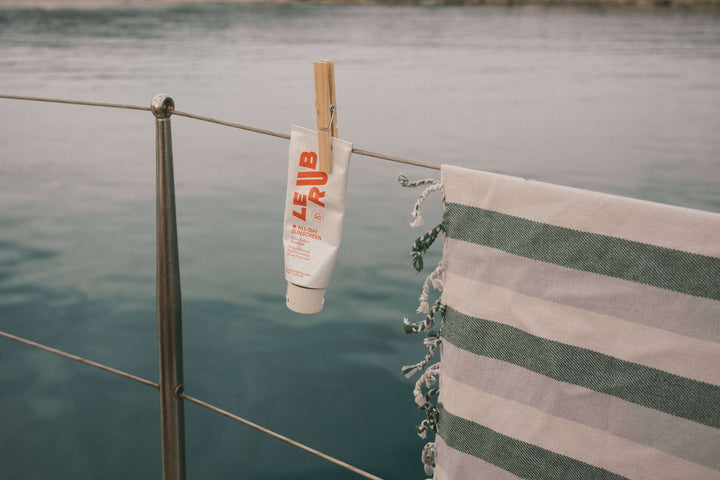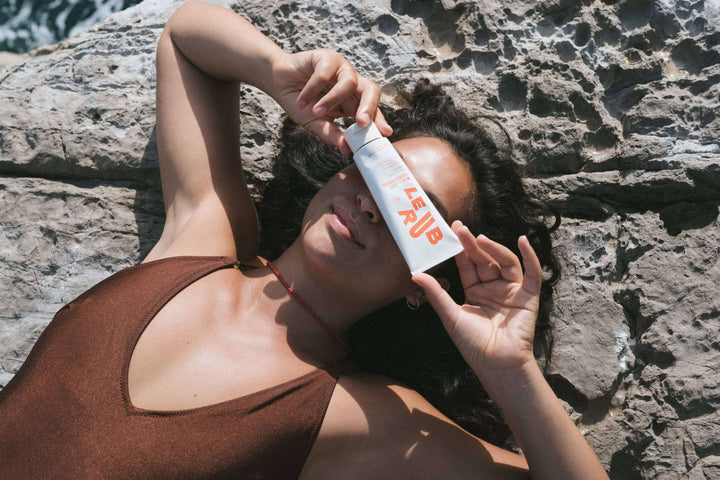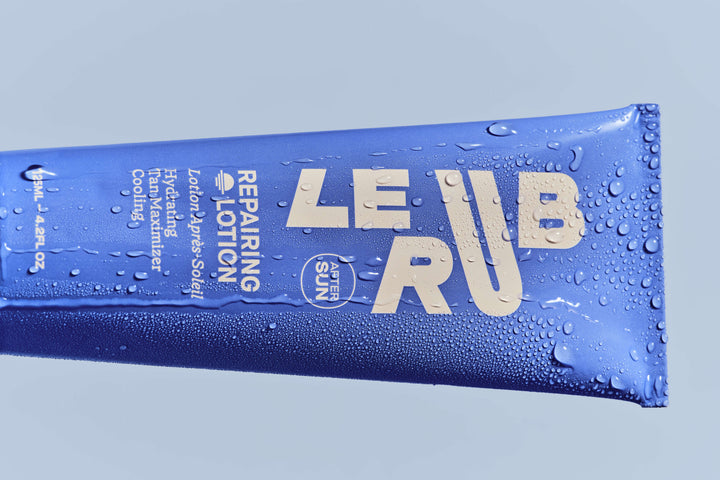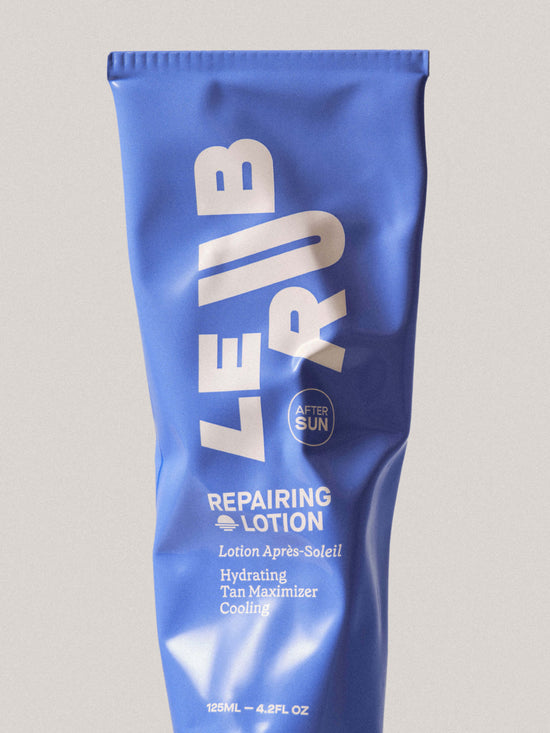Who doesn’t love the sun? We all enjoy its warmth, light and delightful doses of vitamin D. The summer days are endless and we eat al fresco and good vibes only. We listened to Baz Luhrmann and we all wear sunscreen.
It’s the simple and necessary step to avoid sun damage that can lead to skin cancer, and is responsible for the majority of visible changes to the skin (photoaging). However, did you know that the sun’s harmful ultraviolet (UV) rays can even pass through clouds to damage your DNA? They can even creep in your window. Fear not, there’s a silver lining …
The Miracle of Mineral Sunscreen
Mineral sunscreens work by reflecting those damaging rays back off the body. They sit on the skin like a physical block between you and UV rays. At Le Rub, we use non-nano zinc oxide as our active sunscreen agent, which is the most coral-friendly and skin-safe ingredient available. It also offers broad-spectrum protection against both UVA and UVB rays, so we think it’s pretty miraculous.
It might seem a small thing, but Le Rub never compromises on texture either. Our products protect you from all UV rays, while supercharging the skin with supremely hydrating ingredients to nurture and nourish.
So vacations come and the good times roll when we’re safely rolled in sunscreen.
Yes, We Love The Sun.
How it feels on our skin fresh from the sea. But protecting your skin with a broad-spectrum mineral sunscreen? That takes precedent. Earlier this year, the British Association of Dermatologists issued new guidance urging people to protect their skin with sunscreen for at least six months of the year. That’s because UV rays can penetrate cloud cover, making sun protection necessary on a daily basis. Melting a mineral SPF into your everyday skincare routine ensures consistent sun protection, whatever the weather.
What Are UVA and UVB Rays?
So the sun emits two primary types of ultraviolet rays: UVA and UVB. UVB makes the melanocytes in our skin produce more pigment, (it’s why we tan) but it also burns the outer layers of our skin – think, ‘B’ for burning.
UVA is a longer-wave length UV ray that penetrates deeper into the skin. It darkens existing pigment in the skin and breaks down our collagen and elastin supplies by penetrating deeper into the dermis. This causes ‘A’ for premature ageing, fine lines and age spots. In fact, up to 90% of all skin spots, wrinkles and texture issues are caused by UV damage and exposure to UV light. Both UVA and UVB rays increase the risk of cancer, even when we’re in the shade. That’s right, clouds are not a cover.
Clouds: Not Reliable UV Blockers.
There are no free passes. UVB rays can bounce off surfaces such as sand, water and walls, while UVA rays creep through clouds, windows and way beneath the water’s surface. Essentially, UV rays have an AAA pass to permanent damage. Clouds can provide a temporary sigh of relief from sunlight but it’s a false sense of security. Up to 80% of the sun’s UV radiation can pass through cloud cover.
Here’s a gentle reminder that your SPF-containing cosmetics might not offer UVA protection. Using a mineral, broad-spectrum sunscreen as the final step of your skincare routine is the most important.
What Is SPF, And How Does It Work?
SPF stands for Sun Protection Factor and refers to the ingredients that block UVB rays only. Properly applied, SPF15 blocks 94% of UVB rays, SPF30 blocks 97%, and SPF50 blocks 98%. No sunscreen can block 100% of UV rays, and America’s Food and Drug And Drug Administration (FDA) even banned the term ‘sunblock’ on labels.
SPF measures how well a sunscreen shields against sunburn caused by UVB rays, which are most likely to cause cancer. It’s recommended to start at 30.
So What Blocks UVA Rays?
The all-important words: broad-spectrum-sunscreen. Seeing this on a bottle means there are other ingredients included to protect against UVA rays. Generally, the higher the UVB protection, the higher the UVA shield is too.
Does this mean you’re fully protected? Well, the rest is up to you. Research shows that most people are not wearing enough sunscreen to get the SPF protection offered. Most people are putting on only a third, of half of what they need. Either the layer is too thin, or it’s not being re-applied enough.
How Much Sunscreen Do You Actually Need?
According to studies, probably more than you think. Sunscreen must be reapplied every few hours, plus after excess sweating, or a swim. Approximately 4 ml (just under a teaspoon) is advised for an entire face and neck. For the body, it’s about 25 ml. Think of a shot glass then fill it to the top. Go on, right to the brim. That’s how much you need to be using.
The Importance of Sun Damage Prevention
The more your skin is exposed to UV light, the higher the chances of developing skin cancer.* The damage that UV light does to your skin is incremental. Without sunscreen, it stacks up. Without prevention, it piles on. UV radiation can add up over time from even short periods of unprotected sun exposure, on a regular basis.
Incorporating our mineral SPF into your daily skincare routine establishes a ritual to consistently guard your skin. Sensible sun protection will minimize the accumulation of sun damage over time and maintain optimal skin health for years to come.
For more good news, click here to read about the merits of mineral sunscreen on your skin and the environment.
